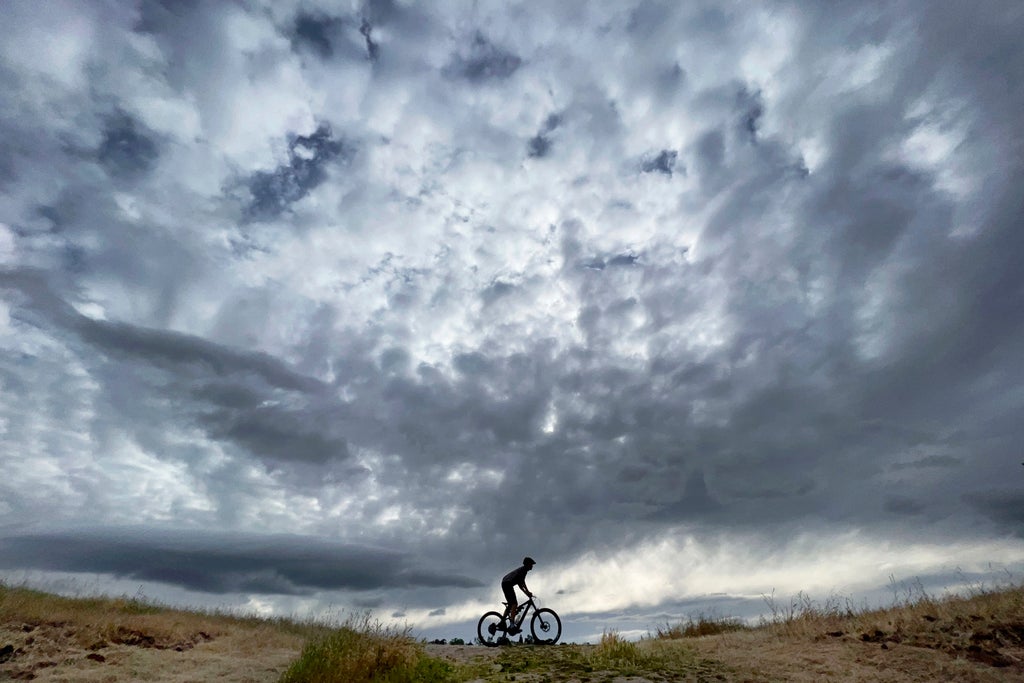
Two people and a dog were rescued from a rain-swollen Southern California river Monday as a vigorous late-season storm moved slowly through the state, bringing heavy showers and snow.
A helicopter rescue crew pulled the dog's owner, a woman, from the rushing Los Angeles River, in the San Fernando Valley, around 2:40 p.m. . But the dog slipped away and continued for more than an hour down the river, which runs through an inaccessible channel with high concrete walls for several miles.
At one point a good Samaritan jumped into the raging river and grabbed the dog, but the animal slipped from his grip too and the man had to be rescued himself.
The medium-to-large black and brown dog eventually reached shallower water, where it was able to walk, and an LA Fire Department crew on the ground pulled it to safety around 4 p.m. to the cheers of bystanders.
The conditions of the rescued woman, man and dog were not immediately available.
More than an inch (2.5 cm) of rain fell in parts of Southern California, the National Weather Service said. The weather system marked a turnabout from an extremely dry winter that has spurred calls for water conservation.
The storm hit the San Francisco Bay region overnight and spread east and south.
Winter weather advisories were issued for the Sierra Nevada, where 6 inches to 12 inches (15-30 centimeters) of snow were expected to fall at elevations above 6,000 feet (1,829 meters), the National Weather Service said.
The Mammoth Mountain resort said the storm could bring some of the biggest totals in quite a while.
“Mother Nature has returned wintry weather and we couldn’t be more stoked,” the resort said on its website.
Winter storm warnings posted for Southern California mountain ranges called for similar amounts of snowfall as well as up to 18 inches (46 centimeters) at higher elevations. Bear Mountain and Snow Summit east of Los Angeles announced last week that they will remain open through April 16.
After two years of drought, California got off to a good start with heavy precipitation in October and December 2021. Then, January and February were historically dry, leaving the state's snowpack well below normal.






